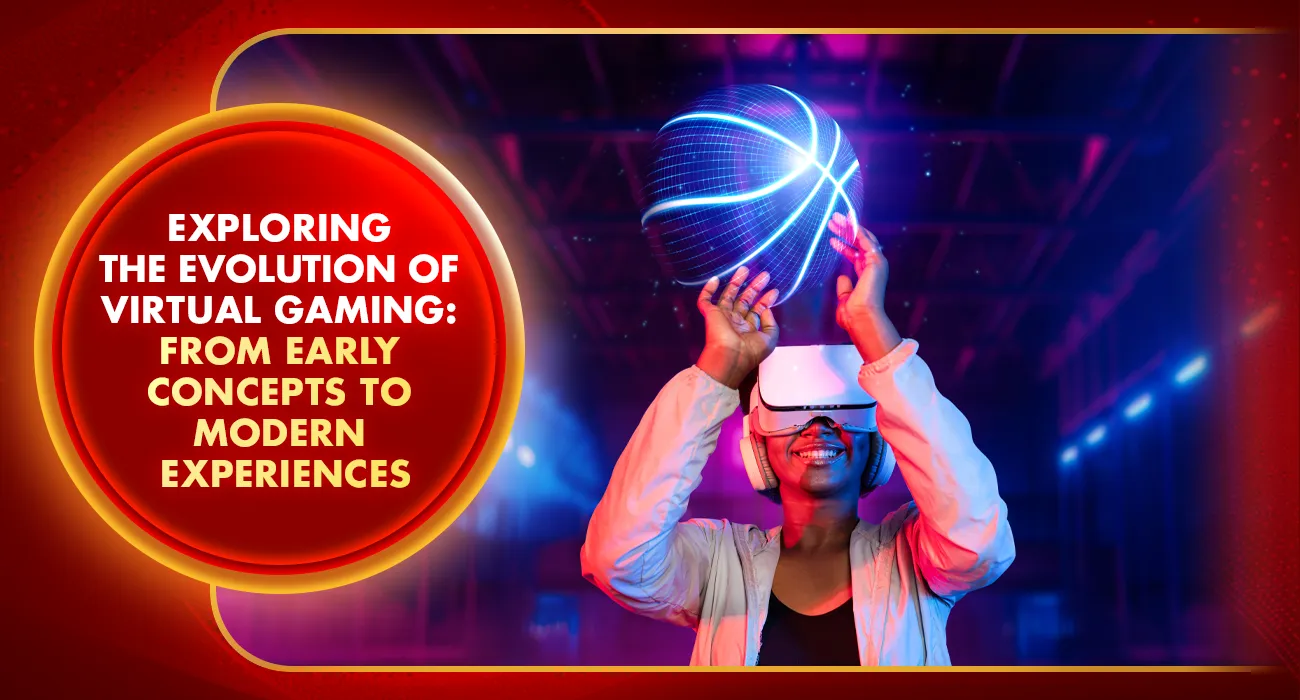Virtual games are indeed sweeping across the world. It commences with conceptual stages all the way to advanced, immersive gameplay that we are presently enjoying. Indeed, the progression of virtual games is an expression of technical advancement and the growing demand for more engaging and interactive forms of entertainment. History of virtual gaming and breakthroughs that have shaped it into what it is today and its applications in modern-day scenarios, such as virtual games in the workplace.
Early Concepts of Virtual Games
The concept of virtual gaming was first conceived in the early 1960s. A basic game called Spacewar! was created by computer scientists for the sole purpose of research. It ran on humongous, room-sized computers and enabled players to control spaceships for a space fight against each other. Although it had very primitive graphics and the gameplay was hardly minimal, Spacewar! turned out to be what eventually led to the birth of an industry that would continue to boom from that time.
Then came the 1970s with arcade games such as Pong and later the invention of Space Invaders. They were the first to give virtual gaming on a reduced level and brought virtual games into the hands of common people for use. Virtual immersion, though a far cry at that time, was still not part of the dream, mainly due to the technology prevalent then.
Advancement of 3D Gaming and Virtual Worlds
Advances in personal computers and gaming consoles defined the 1980s and 1990s, bringing increasingly complex and graphically advanced games. The now legendary Doom and Quake introduced three-dimensional spaces, creating the illusion of being inside the virtual world. These are not only visually groundbreaking, but they lay the foundations of modern multiplayer experience.
Meanwhile, virtual reality (VR) burst onto the stage. It was not much better than the head-mounted displays and all that other clumsy equipment of the early VR systems like Virtuality and Sega’s headset. This stuff was still going for immersion-player immersion, anyway, but high graphics seemed to be out of reach. However, they provided a taste of things to come in virtual games.
The Internet Revolution and Online Multiplayer Gaming
The late 1990s and the early years of this century are a moment in which virtual games were turning points with the advent of the internet. Online multiplayer games such as World of Warcraft and EverQuest engage players in functioning in vast virtual worlds. The games transformed the gaming world and have contributed to global virtual communities of cooperation or real-time competition.
Graphics technology improved further to enable more realistic virtual environments. As a consequence, the games became more immersive, with detailed worlds, complex storylines, and much more interactive gameplay. The boundaries between the virtual game and reality continued to blur.
Contemporary Virtual Gaming
Virtual games, of course, have advanced with technologies like virtual reality and augmented reality. For example, fully immersive VR headsets include Oculus Rift and PlayStation VR. Fully immersive experience: The headset, together with hand controllers and sometimes body suits, would allow the gamer to physically move, go off in any direction, and interact within the virtual world. In the real world, augmented reality overlays digital elements through popular games such as Pokémon GO.
In addition, virtual games for offices have revolutionized how people interact with work and teamwork. Virtual team-building games and activities allow employees to collaborate and bond in a virtual space, transcend geographical boundaries, improve communication, and boost interactivity between members. As such, these virtual games for office settings have indeed elevated employee morale and productivity.
The Future of Virtual Gaming
The future for virtual gaming does seem unlimited. Virtual games will be more immersive, personalized, and accessible because of the integration of AI, cloud computing, and 5G technology. Players can expect more seamless interactions in increasingly realistic digital environments. Besides, resources like Khelraja are bringing interesting opportunities in virtual games, especially in sports betting and internet casino games. Virtual games are constantly changing, so there is a huge pool of innovation and new experiences.
Virtual gaming started from very simple beginnings. As technology advances, so do the ways in which one can interact with virtual games and situations, creating possibilities that lead to more immersion, better engagement, and higher social connective possibilities. This basically applies whether you are aiming to have fun or connect with your colleagues for office use in virtual games.
Also read: The Role of Timing in Crash Games: How to Make Smart Bets 2025






